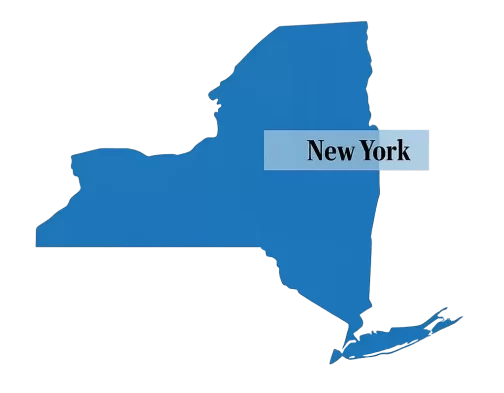The Mayor of New York City serves as the chief executive officer of the city, wielding significant influence over its administration and governance. This role is not merely ceremonial; it encompasses a wide range of responsibilities that directly affect the lives of millions of residents. The mayor is tasked with ensuring that city services are delivered efficiently, public safety is maintained, and the overall quality of life for New Yorkers is improved.
As the face of the city, the mayor represents New York in various capacities, from local events to international forums, showcasing the city’s diversity and vibrancy. In addition to administrative duties, the mayor plays a crucial role in setting the city’s agenda. This includes prioritizing issues such as housing, education, transportation, and public health.
The mayor’s vision for the city can significantly shape its trajectory, influencing everything from budget allocations to community development initiatives. As a result, the mayor’s leadership style and policy preferences can have lasting impacts on the city’s future.
Key Takeaways
- The Mayor of New York City plays a crucial role in leading and representing the city.
- The responsibilities and duties of the Mayor include overseeing city agencies, creating the city budget, and addressing public concerns.
- The history of Mayors in New York City reflects the city’s evolution and growth over time.
- Challenges faced by the Mayor of New York City include managing a diverse and complex city, addressing social and economic issues, and handling crises.
- The Mayor wields significant influence and power in shaping the direction and policies of New York City.
The Responsibilities and Duties of the Mayor
The responsibilities of the Mayor of New York City are extensive and multifaceted. One of the primary duties is to oversee the various city agencies that provide essential services to residents. This includes everything from sanitation and public transportation to education and public safety.
The mayor must ensure that these agencies operate effectively and efficiently, often requiring a deep understanding of complex bureaucratic systems and the ability to manage large teams of employees. Moreover, the mayor is responsible for preparing and presenting the city budget, which outlines how public funds will be allocated across different sectors. This task requires not only financial acumen but also a keen awareness of community needs and priorities.
The mayor must engage with various stakeholders, including community leaders, advocacy groups, and residents, to gather input and build consensus around budgetary decisions. Additionally, the mayor has the authority to propose legislation to the City Council, further solidifying their role as a key player in shaping public policy.
The History of Mayors in New York City

The history of mayors in New York City is rich and varied, reflecting the city’s evolution over centuries. The position dates back to 1665 when Thomas Willett became the first mayor of New Amsterdam, a small Dutch settlement that would eventually grow into one of the world’s largest cities. Over time, the role has transformed significantly, adapting to changing political landscapes and societal needs.
Early mayors often focused on issues such as trade and commerce, while modern mayors grapple with complex urban challenges like housing affordability and climate change. Throughout history, several mayors have left indelible marks on the city. Figures like Fiorello LaGuardia in the 1930s championed progressive reforms and worked tirelessly to improve living conditions for New Yorkers during the Great Depression.
More recently, mayors such as Rudy Giuliani and Michael Bloomberg have been credited with implementing policies that transformed the city’s safety and economic landscape. Each mayor has faced unique challenges reflective of their times, shaping not only their legacies but also the future direction of New York City.
Challenges Faced by the Mayor of New York City
| Challenges | Description |
|---|---|
| Budget Deficit | The mayor has to address the city’s budget deficit and find ways to balance the budget. |
| Housing Affordability | Ensuring affordable housing for all residents in a city with high living costs. |
| Public Safety | Addressing crime rates and ensuring the safety of the city’s residents. |
| Infrastructure Maintenance | Maintaining and improving the city’s infrastructure, including roads, bridges, and public transportation. |
| Education Quality | Improving the quality of education in public schools and addressing disparities in educational opportunities. |
The position of mayor comes with its fair share of challenges, many of which are exacerbated by New York City’s size and complexity. One significant challenge is managing public safety in a city with a diverse population and varying socioeconomic conditions. Balancing law enforcement practices with community relations has proven difficult, particularly in recent years amid national conversations about police reform and social justice.
The mayor must navigate these sensitive issues while ensuring that all residents feel safe and protected. Another pressing challenge is addressing housing affordability in a city where real estate prices continue to soar. The mayor must find innovative solutions to provide affordable housing options for low- and middle-income families while also managing gentrification and displacement concerns.
This requires collaboration with developers, community organizations, and state agencies to create policies that promote equitable growth without sacrificing neighborhood integrity.
The Influence and Power of the Mayor in New York City
The influence wielded by the Mayor of New York City is substantial, often extending beyond local governance into national conversations about urban policy. As one of the most prominent mayors in the United States, the mayor’s decisions can set precedents that other cities may follow. This power is amplified by New York City’s status as a global metropolis, where issues such as immigration, climate change, and economic inequality are at the forefront of public discourse.
Moreover, the mayor’s ability to mobilize resources and rally public support can significantly impact legislative outcomes. By leveraging media attention and public opinion, a mayor can advocate for policies that align with their vision for the city. This influence is particularly evident during crises when decisive leadership can shape public perception and response efforts.
The Relationship between the Mayor and City Council

The relationship between the Mayor of New York City and the City Council is pivotal in determining how effectively policies are implemented. While both entities share a commitment to serving residents, their interests may not always align. The mayor proposes legislation and budgetary priorities, but it is ultimately up to the City Council to approve or amend these proposals.
This dynamic can lead to negotiations that require compromise and collaboration. Effective communication between the mayor and council members is essential for fostering a productive working relationship. When both parties are aligned on key issues, they can work together to enact meaningful change for constituents.
However, when disagreements arise—whether over budget allocations or policy initiatives—the resulting tension can hinder progress and create gridlock within city government.
The Mayor’s Impact on Public Policy and Legislation
The Mayor of New York City plays a critical role in shaping public policy and legislation that affects millions of residents. Through their ability to propose new laws and advocate for specific initiatives, mayors can drive significant changes in areas such as education reform, environmental sustainability, and public health. For instance, recent mayors have prioritized initiatives aimed at reducing carbon emissions and promoting green spaces throughout the city.
Additionally, the mayor’s influence extends to social issues such as homelessness and healthcare access. By championing policies that address these pressing concerns, mayors can mobilize resources and galvanize public support for initiatives that improve quality of life for vulnerable populations. The ability to enact change through legislation underscores the importance of strong leadership in navigating complex urban challenges.
The Mayor’s Role in Shaping the Future of New York City
As New York City continues to evolve in response to global trends and local needs, the role of the mayor becomes increasingly vital in shaping its future. With challenges such as climate change, economic inequality, and public health crises on the horizon, effective leadership will be essential in steering the city toward sustainable solutions. The mayor’s vision for urban development—whether through infrastructure improvements or social equity initiatives—will play a crucial role in determining how New York adapts to these challenges.
Moreover, engaging with residents and fostering community involvement will be key components of successful governance moving forward. By prioritizing transparency and inclusivity in decision-making processes, mayors can build trust with constituents and ensure that diverse voices are heard in shaping policies that impact their lives. Ultimately, the future of New York City hinges on strong leadership that embraces innovation while remaining grounded in community needs.
In conclusion, Rockaway Home Care has been a quality provider of home care in New York for over 20 years, demonstrating a commitment to enhancing the lives of individuals through compassionate care tailored to their unique needs.
The Mayor of New York City recently discussed the importance of home care services for residents in need. In a related article, caregivers in the city are outlined to have specific duties when providing care through the Consumer Directed Personal Assistance Program (CDPAP). To learn more about the caregiver duties in CDPAP, check out this article. It is crucial for families to understand the home care options available to them, especially if they require more hours of care. For more information on how to determine if you need more home care hours, visit this link. Additionally, having open conversations with family members about home care can lead to better decision-making and support for loved ones. To read about tips on talking about home care with your family, click on this article.




